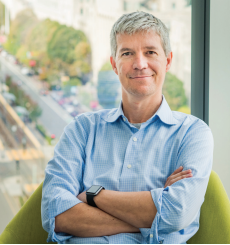Letter from the Director 2021
 While the Boston University Neurophotonics Center (NPC) has just completed its fourth year of operation, this is our third annual report. Due to all the upheaval during the pandemic, we did not complete an annual report last year. As such, this annual report is covering activities from the last 2 years from July 2019 through June 2021.
While the Boston University Neurophotonics Center (NPC) has just completed its fourth year of operation, this is our third annual report. Due to all the upheaval during the pandemic, we did not complete an annual report last year. As such, this annual report is covering activities from the last 2 years from July 2019 through June 2021.
A major development for the NPC over the last two years was the arrival of Professor Anna Devor and her team – including Martin Thunemann, Kivilcim Kilic and Natalie Fomin-Thunemann – in CILSE. I am very excited to have the Devor lab here at BU and to have Anna’s assistance as the Associate Director of the NPC. Her creativeness in the neurophotonics space, particularly in microscopy methods and animal models, and the Devor team’s open- ness to collaboration and helping others will greatly benefit the mem- bers of the NPC. While the onset of the pandemic caused a great deal of delay in moving the Devor lab to BU and then in setting up all the equipment, they are now fully up and running and already bringing in new large grants funded through NIH BRAIN Initiative.
The last two years has also seen continued growth in the NPC community, now engaging 46 faculty at BU and their trainees. This growth over the last two years arose from the addition of new faculty that we welcome to BU (Abdoulaye Ndao, Hadi Nia, and Timothy O’Shea) as well as the growth of faculty interested in working with the NPC in adopting functional near infrared spectroscopy (fNIRS) and related human focused neurophotonic technologies into their research programs (Lou Awad, David Chung, Claudio Ferre, Simone Gill, David Greer, Deepak Kumar).
Supporting the growth of fNIRS activities within the NPC, we obtained a $5.9 million award from the NIH BRAIN Initiative for developing and deploying “The Neuroscience of Everyday World- A novel wearable system for continuous measurement of brain function.” This award is directly engaging the labs of Boas, Cronin- Golomb, Ellis, Kiran, Somers and Yücel; and the technologies we are advancing under this grant are immediately impacting the efforts of many other groups at BU including the labs of Awad, Ferre, Gill, Kumar, Lewis, Sen and Tager- Flusberg. You can read much more about these exciting developments in the feature article in this annual report.
Another big development was the establishment of the NPC Core Facility. By the end of 2019, the NPC instrumentation was being extensively used by many groups and we did not have a manageable scheduling system in place, nor did we have sufficient infrastructure to maintain the high level of usage. Leading up to the start of the July 2020 fiscal year, we established the NPC Core Facility policies and obtained approval from the University to operate as a core facility. We have just completed the first year of operation and were approved to continue into our second year. The available instruments and policies are all easily found on the bu.edu/neurophotonics website. Importantly, the scheduling system put in place is very effective, and the cost recovery model will help ensure that we can maintain the high level of service that this facility pro- vides to the community. The NPC continues to subsidize members, particularly junior members and those developing new ideas. The NPC subsidized approximately 50% of the activities during the 2020- 2021 fiscal year. We expect that the total dollar amount of the subsidy will stay about the same but that the percentage will decrease as more and more grant funded users utilize the core. A critical component of this core model that will benefit all members is that it helps us purchase major new equipment every few years, augmenting what we can obtain by, for example, shared instrument grants.
In the following pages you will also learn about the several faculty projects that have engaged the NPC and the resultant collaborative publications and grants. I very much enjoy working with this community, and as we more fully emerge from the pandemic I look forward to the in- person gatherings and the creative new ideas that will emerge during those interactions.
David Boas
Director, Boston University Neurophotonics Center
October 2021